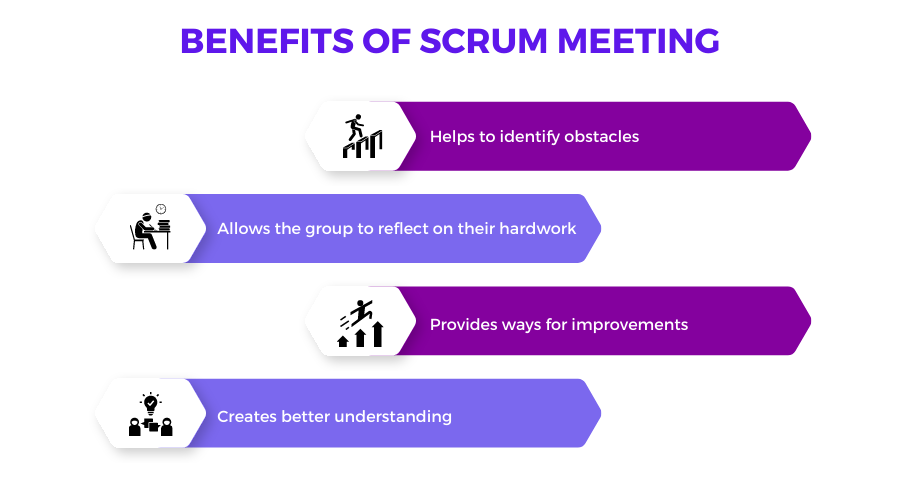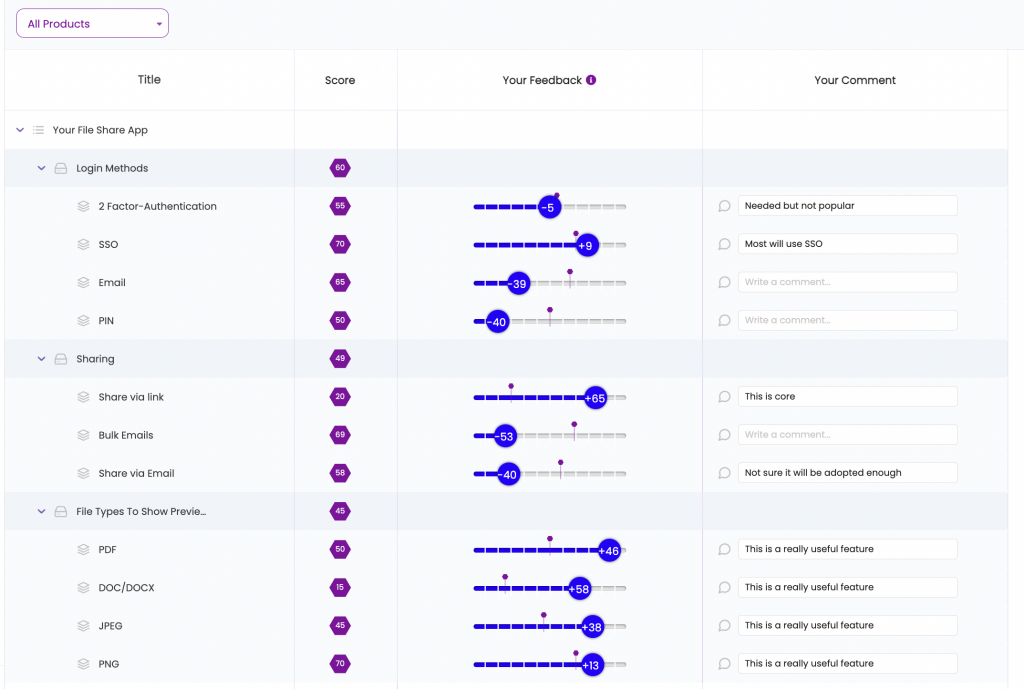What Is Scrum Meeting? (Definition, Meaning and Types)
June 29, 2021 Max 5min read

What Is a Scrum Meeting?
Scrum Meeting Definition
“Scrum meetings refer to scrum team sessions. In a scrum meeting, groups discuss the agile scrum methodology that helps them to break down huge tasks into smaller pieces and complete the work sooner.”
Teams often use scrum meetings as an umbrella term for different meetings in the agile methodology scrum. They include sprint planning sessions, sprint retrospectives, and stand-up meetings. They are executed daily and usually for a short period.
The scrum master, the product owner, the product managers, and the development team attend the scrum meetings.
Scrum meetings can become more manageable regarding transparency and visibility of goals if paired with an ideal product management software like Chisel.
Try Chisel’s free forever version today!
The main aim of the scrum meeting is to discuss insights, reflect on one’s work, and share the progress of the project at hand.
The advantages of daily scrum meetings are that identifying obstacles and solving them is more accessible. The teams can make minor corrections as they go along to avoid wasting too much time making mistakes.
Bonus: Click here to learn all about a scrum team.
Sprint planning and sprint retrospective help keep the team aligned with the priorities and reflect on their work after each sprint. Moreover, they also give the team members a better understanding of their tasks and improve their work quality.

Who Are the Participants of Scrum Meetings?
The active participants in the agile development scrum meetings are the product owner, scrum master, designers, and developers.
Other members from cross-functional teams can also attend these scrum meetings. But they can only observe the meeting and not actively participate in it.
What Are the Types of Scrum Meetings?
Following are the scrum meeting types that you must conduct for every sprint. For agile development scrum meetings types, we have categorized them into three parts:
- When should you run this type of scrum meeting?
- Who can attend it?
- What does the team get out of that scrum meeting type?

Sprint planning scrum meeting.
To know where you are heading, you must conduct the sprint planning scrum meeting. You must take this step before your agile development scrum meetings.
From all the scrum meetings you conduct, the sprint planning scrum meeting must take the longest time (two hours of scrum planning for a week).
In this scrum meeting, you can discuss what your teams want to set a target for that particular sprint. You may also plan another sprint, distribute tasks, and set deadlines.
The product owner must be present for this scrum meeting.
Daily stand up scrum meeting.
As the name suggests, the daily stand up scrum meetings are held daily. They are an essential part of the scrum meeting. The daily stand up scrum meeting is short, and the team discusses two points:
- What tasks did the team member complete yesterday?
- What are they planning to complete today?
This scrum meeting allows the team members to communicate any obstacles they face, any tasks they have difficulty with, and more. It takes up to fifteen to thirty minutes to complete this scrum meeting.
Sprint review scrum meeting
One of the vital scrum meeting types is the sprint review scrum meeting.
Teams can show sprint accomplishments to the PO and stakeholders in this meeting.
Product owners conduct a sprint review scrum meeting toward the end of every sprint. It is time for teams to receive feedback from the product owner and the stakeholders.
This scrum meeting is also crucial because it will help you develop your product better after receiving the feedback and incorporating it.
With Chisel’s features, receiving and referring to feedback from team members is now easier than ever.

Check Chisel’s various exciting tools here.
Sprint retrospective scrum meeting
A sprint retrospective scrum meeting is an internal meeting that teams must conduct.
After every sprint, scrum teams can get together, discuss and retrospect the following questions:
- What did we as a team do well this sprint?
- What are our learnings from these scrum meetings?
- What are the things we could have done differently?
- What are the challenges we are facing currently?
Sprint retrospective scrum meetings can help scrum teams have an open conversation within the group and can last up to two hours.
Product backlog refinements meeting
Between all the above sprint scrum meetings, product backlog refinements meeting occurs.
You can achieve three things from this meeting regarding your product backlog:
- Add the details to your backlog
- Set a target set of deliverables
- Prioritization of tasks in the product backlog
Your overall product backlog refinements meeting will make the product development process smoother.
What Are the 3 Questions in a Scrum Meeting?
The mandatory three questions that teams have to answer in a scrum meeting are as follows:
- What work did you do yesterday?
- What will your focus be today?
- Are there any obstacles that teams are facing?
Some of these questions will not help teams yield the results they strive to achieve. Hence there is a need to go past these three questions in the scrum meeting.
And that includes asking for sprint goals, reviewing ‘in progress’ product backlog items (PBI), and other PBIs.
Scrum Meeting vs. Stand Up Meeting
In a scrum meeting, team members use the scrum guide as the reference, and it is specifically a scrum practice.
It is an agile development scrum meeting, and only product development team members have to be available. The scrum master leads the scrum meeting, not the product owner.
The scrum master must look into these three points:
- Is the scrum meeting taking place from time to time?
- Is the product development team given a chance to voice their opinions and concerns?
- Is the time box allotted for the scrum meeting respected?
Bonus: Want to learn how to create an efficient product development strategy? Click here.
The development team has a say in deciding the place and time for the scrum meeting, who will speak, what order, and more.
On the other hand, a daily stand up scrum meeting refers to a scrum meeting that teams conduct without help from the scrum guide.
In the stand up scrum meeting, team members discuss the tasks and how well everyone is doing them. Scrum teams can also help each other with any challenges they might be facing.
There is no time limit for the stand up scrum meeting. It is one of the scrum meeting types wherein the development team members and anyone else, including the PO, is welcome to join.
FAQs
The main objective of the scrum meeting is to discuss insights, reflect on one’s work, and share the progress of the project at hand. It also helps keep everyone on the same page and make corrections as required to prevent waste of resources.
A scrum meeting is held in the first half of the day to set the tone for the week’s work. It lasts up to 15 minutes.
The team’s facilitator, the scrum master, the product owner, the product manager, and the development team attend the scrum meeting.
